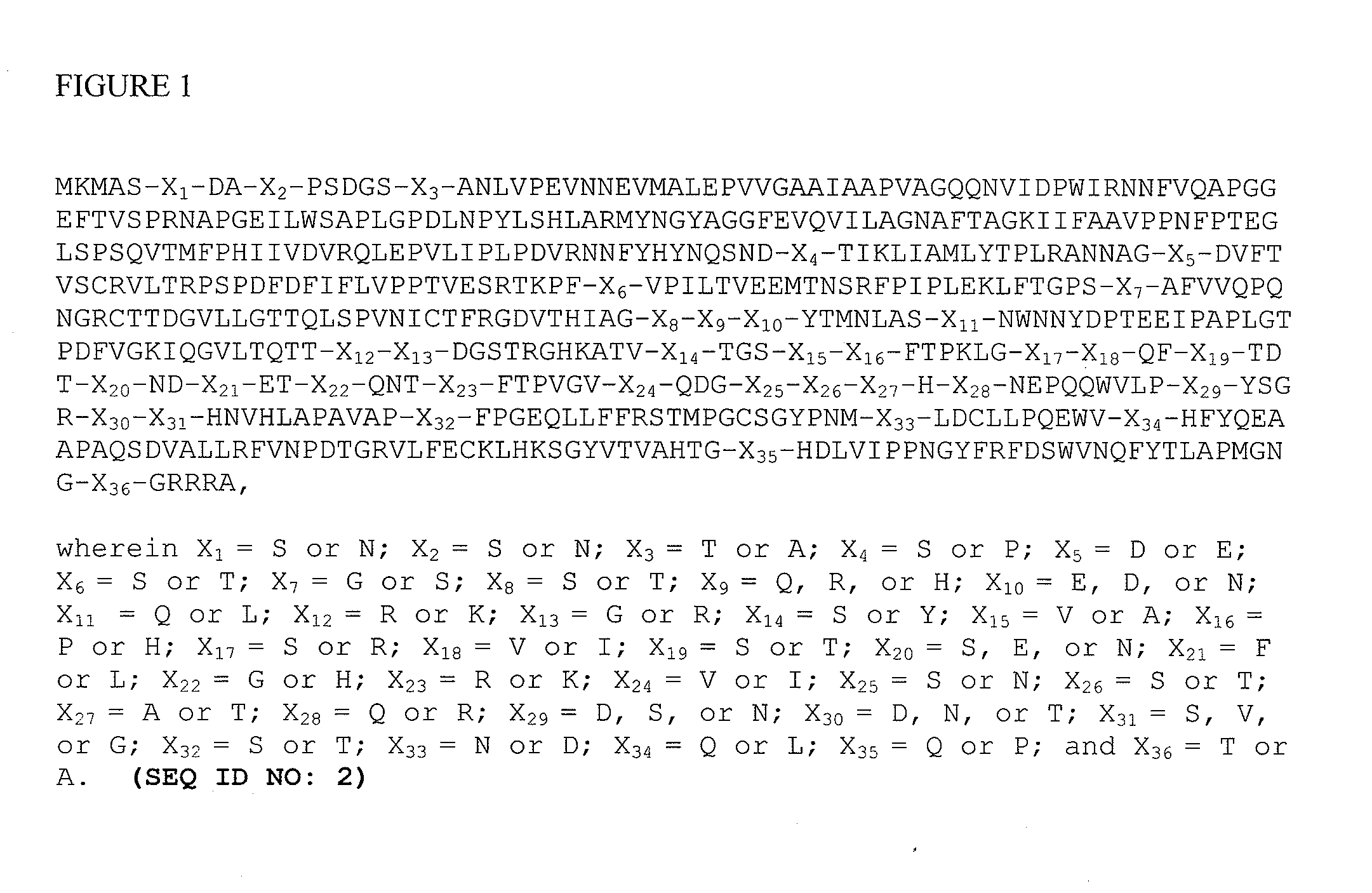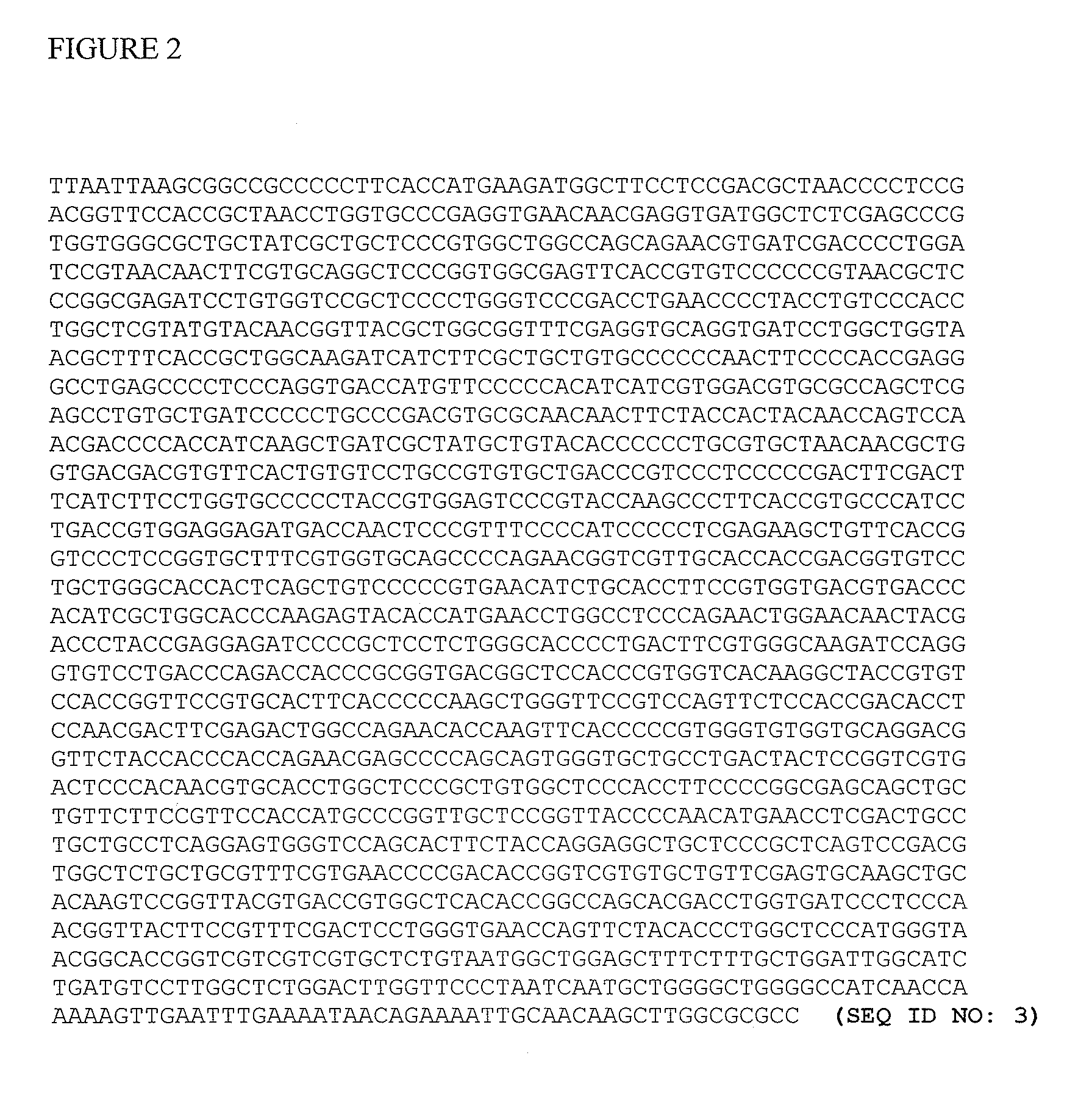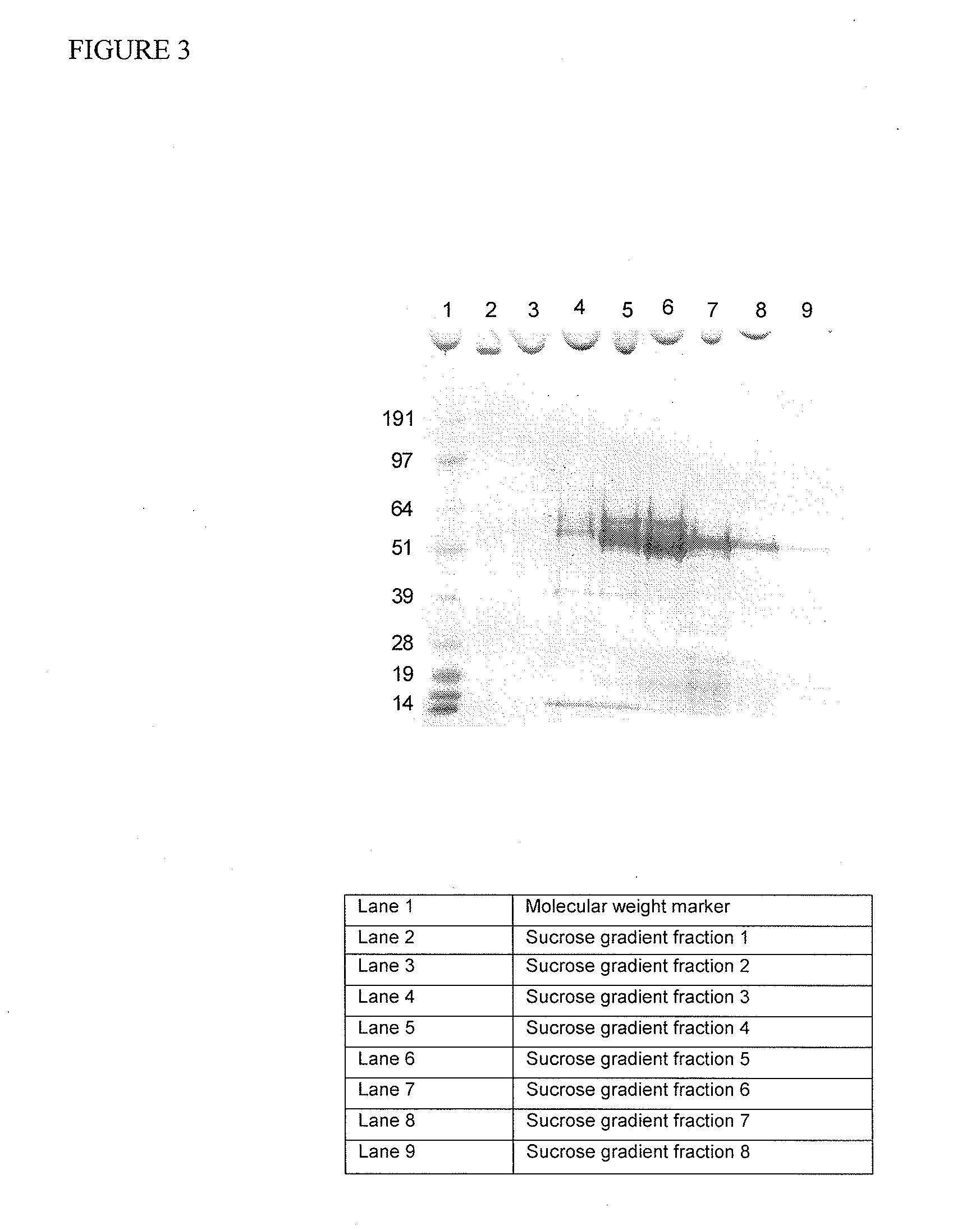Virus-like particles comprising composite capsid amino acid sequences for enhanced cross reactivity
a technology of capsid amino acid sequences and viruslike particles, which is applied in the field of vaccines, can solve the problems of significant timeline delays and costs, significant disease related costs, and the development of vaccines against norovirus, and achieves a higher igg level, enhanced immune response, and reduced dose of antigen
- Summary
- Abstract
- Description
- Claims
- Application Information
AI Technical Summary
Benefits of technology
Problems solved by technology
Method used
Image
Examples
example 1
Design of a Norovirus GII.4 Consensus Gene
[0088]A consensus amino acid sequence for the major capsid protein (VP1) of genogroup II, genotype 4 (GII.4) Norovirus was determined by homology comparison of two recently circulating GII.4 Strains, Minerva, AKA 2006-a; and Laurens, AKA 2006-b, with a GII.4 Houston strain obtained in 2002. The alignment of the three different Norovirus GII.4 isolates is shown below. The consensus sequence (SEQ ID NO: 2) determined from the homology comparison of the three GII.4 strains is shown in FIG. 1.
[0089]A composite sequence was derived from the consensus sequence by selecting amino acids from the Minerva sequence in variable positions of the consensus sequence where all three strains differed. The chosen amino acids were present in antigenic regions near to but not including the proposed carbohydrate binding domain. The composite GII.4 sequence was used for the production of a synthetic gene encoding a composite GII.4 Norovirus VP1 protein (SEQ ID NO...
example 2
Purification of Composite VLPs
[0090]Synthetic gene construct of Norovirus GII.4 composite sequence for capsid domains described in Example 1 was cloned into recombinant Baculovirus. Infection of insect cells demonstrated high yield of production of VLP. A 40 mL aliquot of a P2 pFastBac recombinant baculovirus stock for the composite VLP VP1 gene was processed with a sucrose gradient to verify the expression and assembly of composite VLPs. The conditioned media was first layered onto a 30% sucrose cushion and then centrifuged at 140 K×g to pellet the VLP. The pellet was resuspended, layered onto a sucrose gradient and then centrifuged at 140 K×g. A visible white layer was observed within the gradient after centrifugation. 500 μL fractions from the gradient were collected and then analyzed by SDS-PAGE / Coomassie gel (FIG. 3). The expected banding pattern for composite VLP at ˜56 kDa was observed within the sucrose gradient fractions.
[0091]Using a high pressure liquid chromatography sys...
example 3
Composite Immunogenicity
[0094]Female C57BL / 6 mice approximately 8-10 weeks of age were immunized intraperitoneally with decreasing concentrations of composite VLP (CVLP) starting with 50 μg and decreasing 2 fold to 0.19 μg. The CVLP contained a polypeptide having the sequence of SEQ ID NO: 1 as described in Example 1. A group of animals immunized with PBS alone was included as a negative control. Serum samples were collected and analyzed for the presence of CVLP-specific IgG by ELISA (FIG. 7). The results from this experiment indicate that the linear range of the dose curve is between approximately 6 μg and 0.2 μg. Doses above 6.25 μg of CVLP do not appear to enhance immune responses in a dose-dependent manner. The EC50 value (defined as the effective dose yielding a 50% response) was calculated to be approximately 1.0 μg / mL using Softmax Pro software (Molecular Devices Corporation, Sunnyvale, Calif.).
PUM
| Property | Measurement | Unit |
|---|---|---|
| molecular weight | aaaaa | aaaaa |
| molecular weight | aaaaa | aaaaa |
| molecular weight | aaaaa | aaaaa |
Abstract
Description
Claims
Application Information
 Login to View More
Login to View More - R&D
- Intellectual Property
- Life Sciences
- Materials
- Tech Scout
- Unparalleled Data Quality
- Higher Quality Content
- 60% Fewer Hallucinations
Browse by: Latest US Patents, China's latest patents, Technical Efficacy Thesaurus, Application Domain, Technology Topic, Popular Technical Reports.
© 2025 PatSnap. All rights reserved.Legal|Privacy policy|Modern Slavery Act Transparency Statement|Sitemap|About US| Contact US: help@patsnap.com



